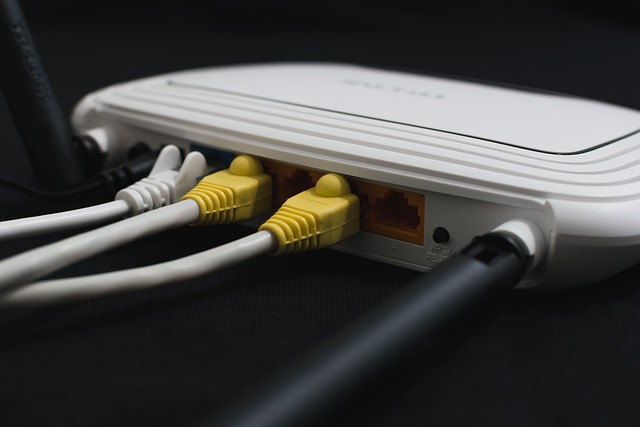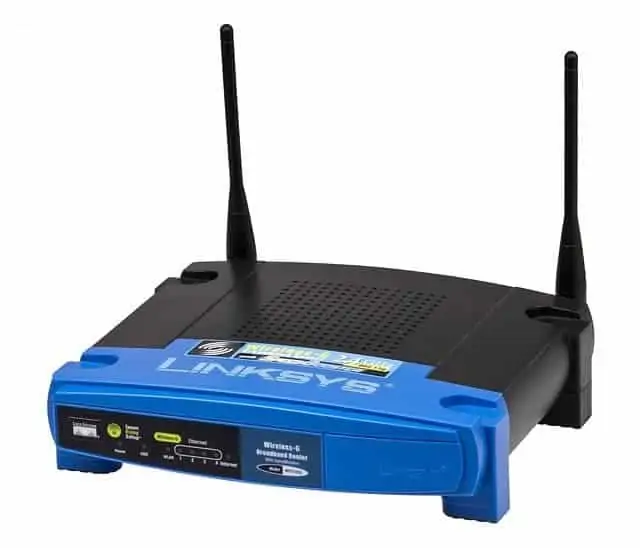This is a pretty common networking problem, where internet users who’ve had a Wi-Fi router for a long time notice that performance starts to slow down over time, with a weaker signal and slower speeds. Why does this happen and is there anything we can do to stop it?
Wi-Fi routers are like any other piece of electrical equipment in that they are susceptible to decline in performance over time with enough use, as the components wear out, get damaged from repeated overheating, or get clogged with dust and other particles. Damage from water spillage or other liquids can also reduce performance over time.
Here are the main reasons why a Wi-Fi router may slow down over time:
- General wear and tear of the components
- Overheating
- Prolonged heavy usage
- Getting clogged with too much data
- Damage from water or physical shocks
Some of this is avoidable, and some is more or less unavoidable and built into how any complex device with lots of components is likely to degrade and depreciate over time. Nevertheless, there are some things we can do to possibly expand the lifespan and usefulness of a router, and squeeze as much use out of them as possible.
The Main Reasons For Slowing Down
Let’s go into each of the points listed in the first section in a bit more detail, to explain why routers can slowly start to lose performance over time:
1. General Wear & Tear – Wi-Fi routers are like any other electronic or mechanical device with lots of working parts, in that each of these parts will degrade and decline in performance over time. This includes the fan, processors, ethernet ports, Wi-Fi hardware and so on. In terms of how long this decline takes, estimates vary widely with routers, but anything between 5-10 years is a reasonable estimate, assuming reasonable use. Some electrical components can last a long time, but not forever, as parts inevitably start to wear out at some point. Many routers also get clogged with dust and other particles which can seep in through the fan/cooling outlets, reducing the performance of the internal components.
2. Overheating – This is a huge one. Home Wi-Fi routers are often left on continuously as they are needed all times of day and night, and because of this, they never get chance to rest and cool down. Overheating can cause the performance of the internal components to decline, especially the processors (as in a PC or laptop). Routers do often have fans inside to assist cooling, but overheating issues can also be exacerbated if ambient temperatures are very high, like in the height of summer or in a generally warm climate, or if the router is stored in an enclosed area that isn’t well ventilated. We’ll cover solutions further below but periodically turning off/resetting routers can help with this.
3. Prolonged Heavy Use – As with pretty much any device, the more intensively it’s used, the lesser the lifespan on average. If you are the sole user of a router in a house, and only a moderate internet user, then the router isn’t really under a lot of stress and could last for years. If you’ve got a large house with 10+ connected devices, with heavy internet use at all times of the day for years on end, then the router is likely to wear out and slow down quicker as the internal components are put under more prolonged stress (linked to Point #1 – more use equals more wear and tear).
4. Getting Clogged With Data – This is a lesser known factor. Wi-Fi routers do store user data over time, and can get clogged with too much of this data which can slow down performance. Periodic resets can help with this; we’ll cover this in the next section.
5. Damage – Spilling water on a router or dropping/knocking it over too much can also damage or knock out of position the internal components, reducing performance over time.

Older routers are probably slow because the internal components are just old and worn out
Common Solutions For Slow Router Performance
Now we’ve covered the main reasons why a Wi-Fi router can slow down over time, let’s look at some good solutions to either prevent this, or to resolve issues with an older router that has poor performance.
1. Turn Off The Router Periodically – This covers the overheating and overuse issue well. Just unplugging your router for around 30 minutes every so often can help the internal components to cool down and possibly increase the lifespan a bit. Especially consider this in summer time when you can feel the router getting very hot. Giving it a break once in a while can help.
2. Factory Reset The Router Periodically – This can handle the overheating issue, but also the data issue. If you perform a full factory reset of your router every now and then, it should wipe all user data off it, and restore it completely to how it was out the box. This can be useful especially for routers which have had a lot of users connecting to them over time. Most routers have either a factory reset button or a hole you stick a safety pin through for about 10 seconds to perform this full reset. Be aware that this will reset all router logins and passwords back to default though, and you’ll also lose any custom settings you’ve configured on the router. However, can help with performance by clearing off all user data and history/logs.
3. Clean the Router – If there’s a lot of dust on the router, it’s a good idea to wipe it down regularly, and perhaps go over any fan/outlet areas gently with a hoover to clear out any dust and dirt from the vents (make sure the router is turned off and fully unplugged before you do this).
4. Correct Router Placement – Addresses the issues of damage and ambient temperature. Place your router in a safe, clean place where it can’t be so easily damaged or have things spilled on it, and also where it isn’t too hot or cold. Avoid placing it in direct sunlight or in a place that isn’t well aired. A central, elevated, well ventilated place is a good optimum.
5. Get Replacement From Your ISP – If your current router’s performance has drastically reduced, or the needs of the current household have outstripped what it’s capable of, then it’s worth asking your internet provider to see if they’ll send a more up to date replacement. They may or may not charge for this, but it’s always worth seeing if they’ll send a newer router out to you.
6. Get Your Own Router Online – Another option is to get your own replacement router online; there are loads of commercially available Wi-Fi routers now that can do an excellent job. For a budget entry level router, you’ll struggle to do better than the very well reviewed TP Link N450 single band router. For something more advanced, the TP Link Dual Band AX1800 router is a good option. There’s loads of other good routers though; just check that it can be hooked up to your internet provider’s service.
Other Causes of Slow Internet Speeds
It should also be mentioned that before diagnosing an old router as the cause of slow speeds, it is also a good idea to rule out any other possible causes for slow internet speeds, especially when using Wi-Fi. Even if a router is slightly worn out, there are things you can do to alleviate some of the loss in performance and improve the signal.
Here are some other common cause for poor router performance, poor Wi-Fi speeds and sluggish internet in general:
- Too much distance between the router and device, which can cause a weak Wi-Fi signal and slower speeds. This is inevitable as Wi-Fi always drops out over distance.
- Just using Wi-Fi in general is often much slower than if you are plugged into the router with a cable, because of signal interference and degradation issues. Go for ethernet if you want maximum speeds.
- Too much interference from nearby electrical/RF devices can also affect Wi-Fi router performance.
- Placing the router in a non-optimal location also does not help with performance. Try to install the router in a central and elevated position in the house for best signal.
- Poor quality or worn out cables if connecting via ethernet.
- A congested home network can also lead to slower speeds as the router has to process all traffic demands at once. Remember that bandwidth is shared across all users on a network.
- Having a router or device that is not fully updated can reduce performance. Update all router drives, operating systems and apps.
- There may be wider problems with the internet service, leading to slower speeds. Check current status of your ISP here.
